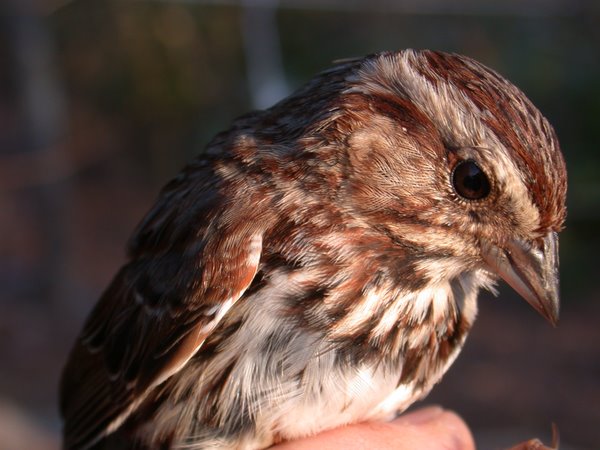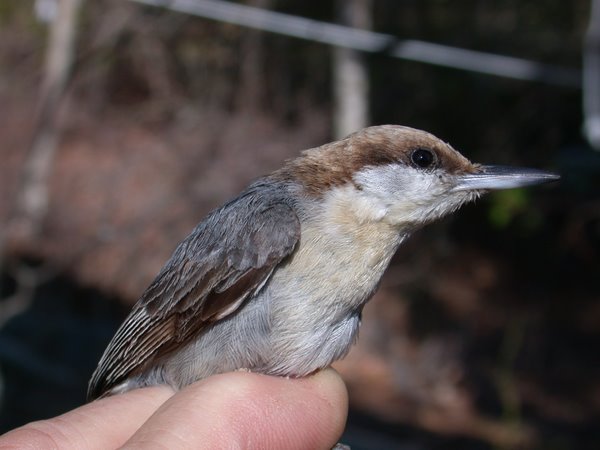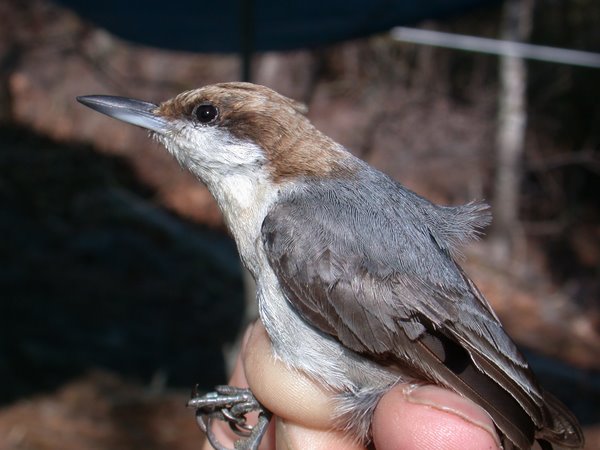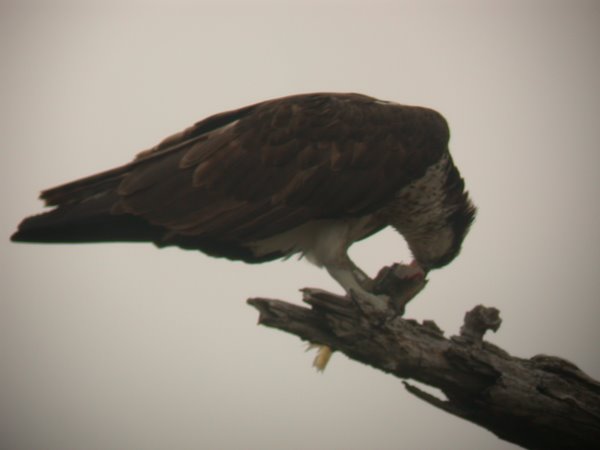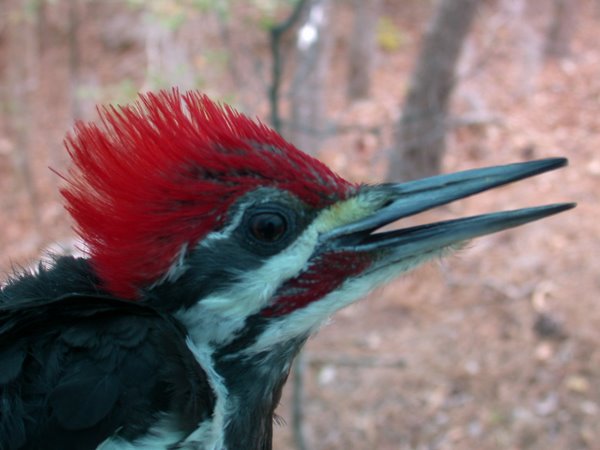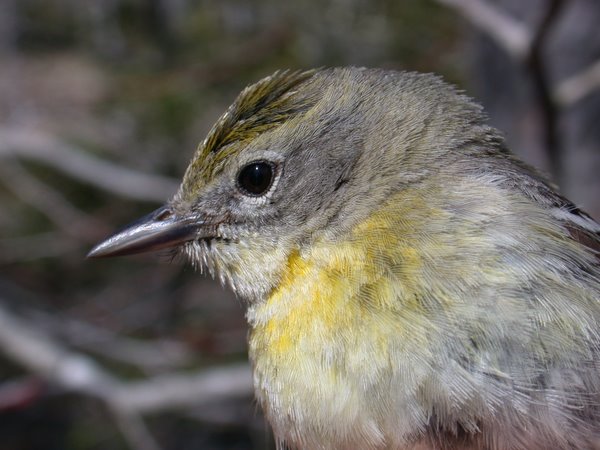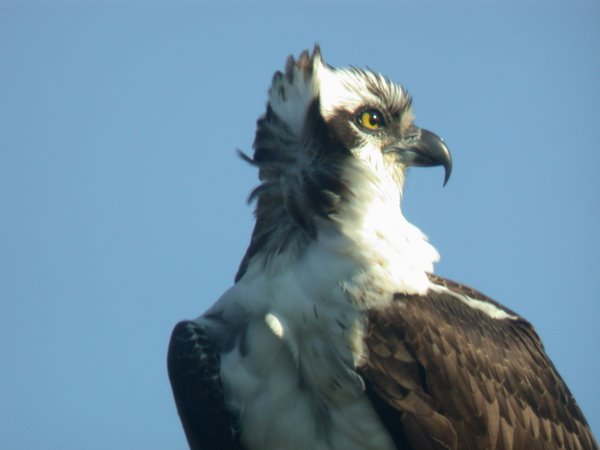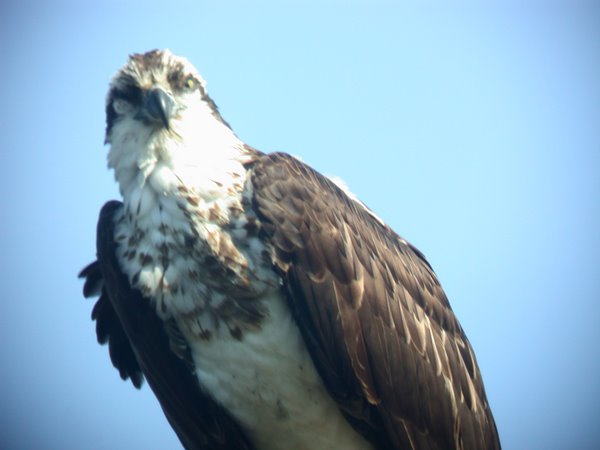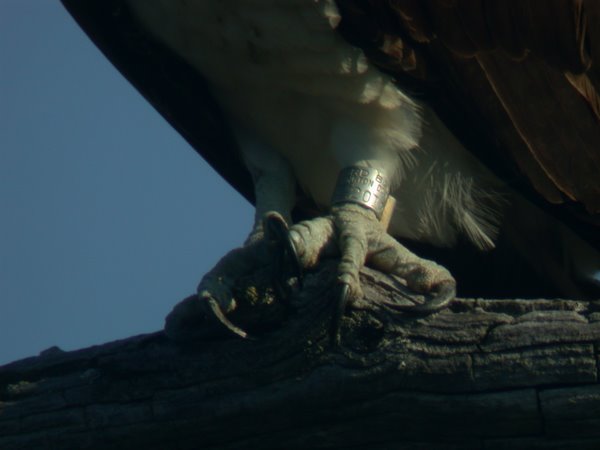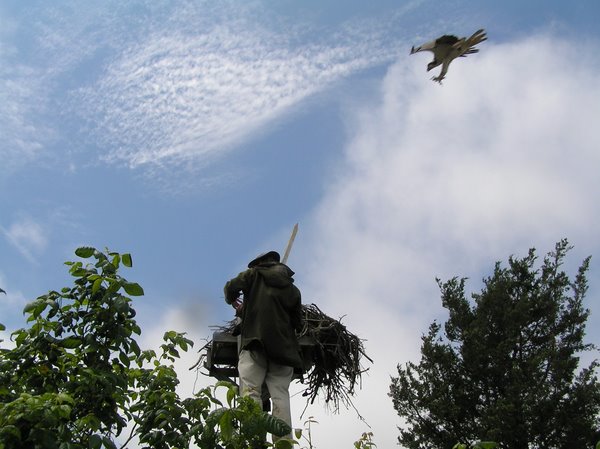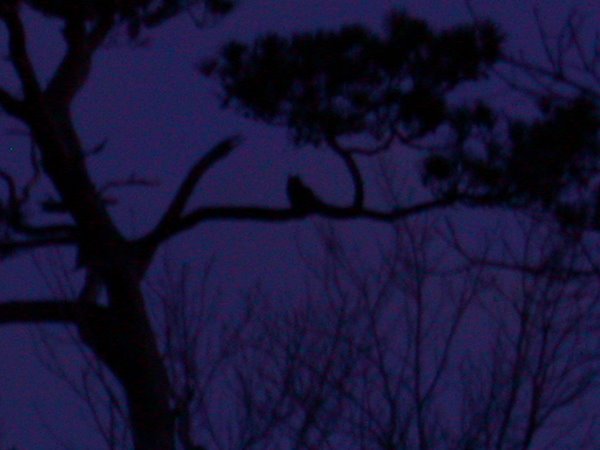

Over two weekends, one in late March and the second in early April, CVWO hosted a bander training session for the second consecutive year. This session was attended by nine individuals, plus the CVWO bander intern. The weather cooperated and bird numbers were sufficient to allow each participant to handle a number of birds using the skills they learned. First Landing State Park provided living quarters and a central meeting/lecture room.
The goal of the session is to demonstrate and teach the basic skills necessary to participate in all aspects of a bird banding project. Various tasks were undertaken by each attendee, including net set-up, take-down and furling. This year the participants included a college student, two college professors, two state environmental agency employees (one from VA; other from NC), an NCAudubon employee, a VSO board member, a CVWO board member and a "professional" volunteer. It was a wonderful group with which to work and interact.










